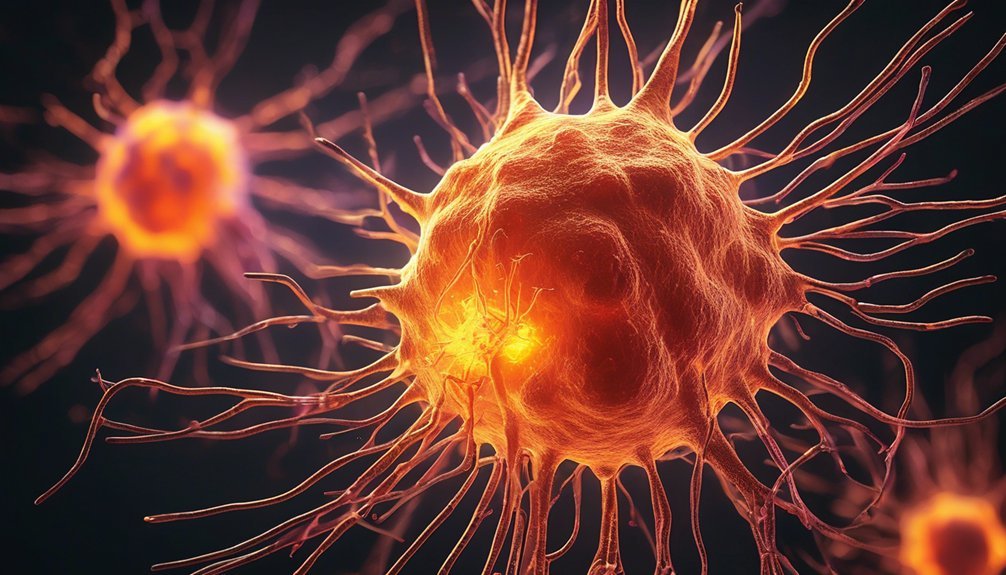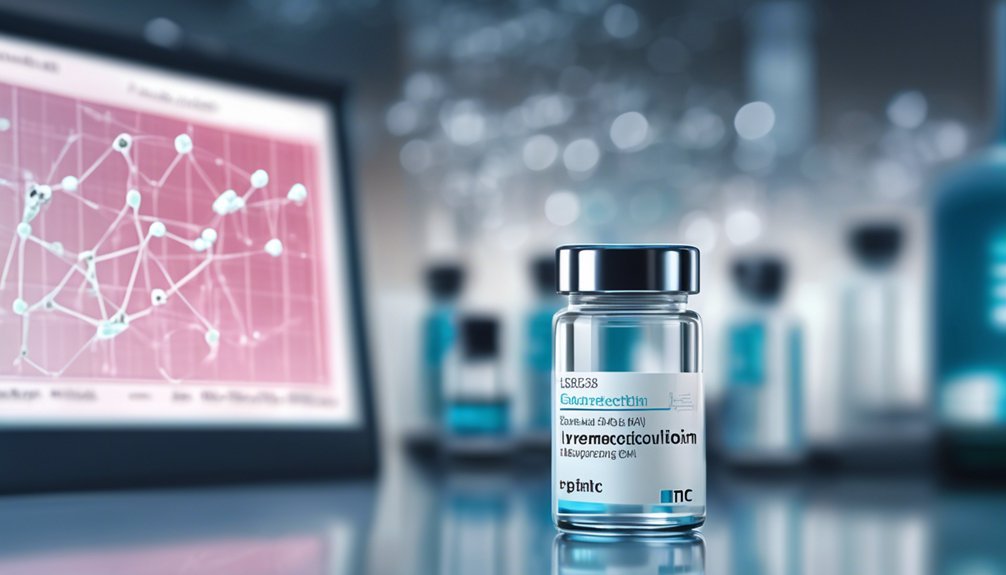Imagine a battlefield where dying tumor cells signal the immune system to mount a counteroffensive. In this complex interplay, ivermectin emerges as a potent catalyst for immunogenic cell death (ICD), orchestrating the release of ATP, HMGB1, and calreticulin. Each component plays a pivotal role in transforming tumor cells into beacons of immunogenicity, yet the full extent of this synergy remains to be uncovered. What new therapeutic avenues might this unveil in cancer treatment?
Key Takeaways
- Ivermectin induces immunogenic cell death (ICD) by promoting the release of DAMPs like ATP, HMGB1, and calreticulin from tumor cells.
- ATP serves as a danger signal, enhancing immune activation and attracting immune cells to tumor sites.
- HMGB1 and calreticulin exposure on tumor cells facilitate dendritic cell maturation and T-cell activation, crucial for anti-tumor immunity.
- Ivermectin transforms cancer treatment by reshaping the immune landscape and boosting systemic immune responses against tumors.
- Understanding these mechanisms optimizes the therapeutic potential of ivermectin in combination with existing cancer therapies.
Understanding Immunogenic Cell Death (ICD)
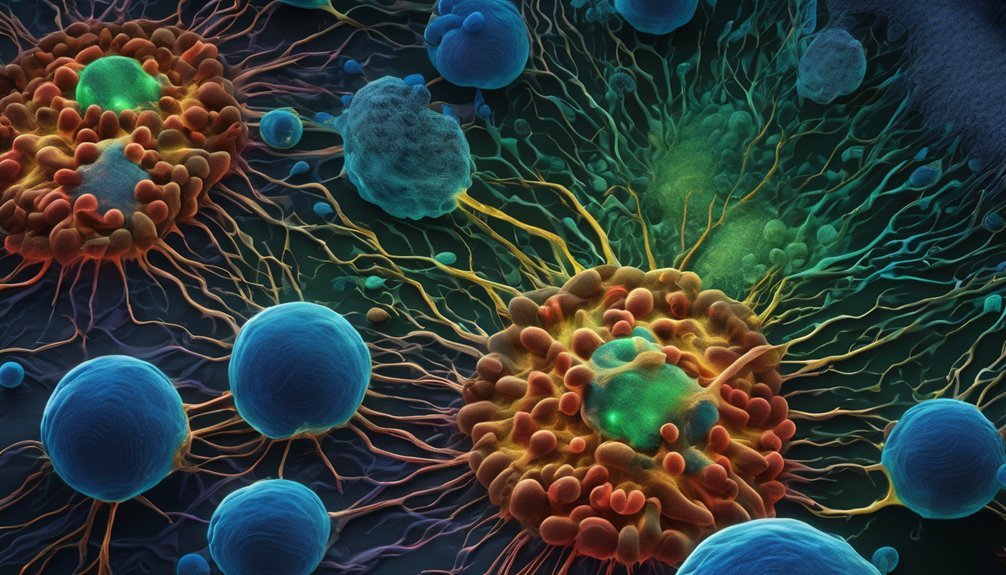
Immunogenic cell death (ICD) represents a critical mechanism through which dying cells elicit an immune response, transforming them into effective agents for cancer immunotherapy.
In the tumor microenvironment, ICD is characterized by specific signals, such as the release of ATP, HMGB1, and the exposure of calreticulin. These signals enhance the activation of dendritic cells, promoting the cross-presentation of tumor antigens to T cells.
As you delve into the intricacies of ICD, you’ll recognize its potential to reshape the immune landscape, fostering a robust anti-tumor response. Understanding these mechanisms not only deepens your insight into cancer biology but also equips you to contribute meaningfully to therapeutic strategies that harness the body’s immune capabilities against malignancies.
The Role of Ivermectin in Cancer Therapy
While many treatments focus solely on direct tumor elimination, recent studies suggest that Ivermectin may play a significant role in cancer therapy by inducing immunogenic cell death (ICD).
This novel approach could enhance the body’s immune response against various cancer types, including melanoma and breast cancer. By determining the optimal ivermectin dosage, you can maximize its therapeutic potential while minimizing side effects.
The interaction between Ivermectin and immune cells can lead to the release of critical damage-associated molecular patterns, further promoting ICD.
Ivermectin’s interaction with immune cells promotes the release of key damage-associated molecular patterns, enhancing immunogenic cell death.
As you explore Ivermectin’s application in oncology, consider its capacity to not only target tumors directly but also to stimulate a systemic immune response, transforming cancer treatment strategies for improved patient outcomes.
Mechanisms of ICD Induction by Ivermectin
Ivermectin’s potential to induce immunogenic cell death (ICD) hinges on specific mechanisms that activate the immune response against tumors.
The activation of ICD mechanisms involves several ivermectin pathways, including the release of damage-associated molecular patterns (DAMPs) such as HMGB1 and calreticulin. These molecules signal the immune system, promoting dendritic cell maturation and enhancing T-cell activation.
Furthermore, ivermectin can modulate autophagic processes, leading to the accumulation of immunogenic signals within dying tumor cells. By manipulating these pathways, ivermectin not only facilitates direct tumor cell death but also primes the immune system for a robust anti-tumor response.
Understanding these ICD mechanisms is crucial for optimizing ivermectin’s therapeutic potential in cancer treatment, ultimately serving to improve patient outcomes.
The Importance of ATP in Immune Activation
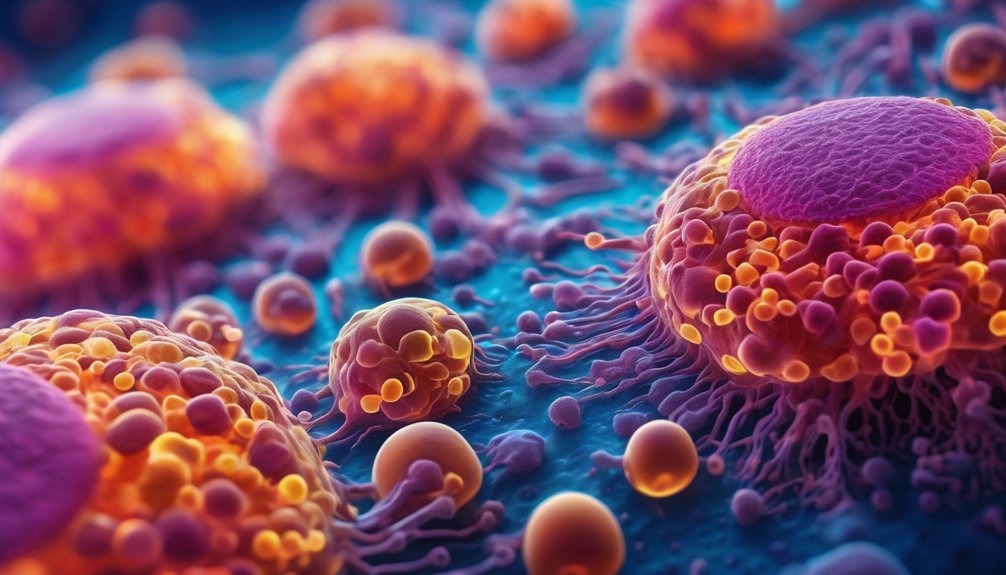
ATP plays a critical role in the activation of the immune response, acting as a potent danger signal that alerts the immune system to cellular stress and damage.
When cells undergo stress, ATP metabolism shifts, leading to the release of ATP into the extracellular space, which enhances immune signaling.
Here’s why ATP is vital for immune activation:
- Induces Cytokine Release: ATP stimulates the production of pro-inflammatory cytokines, amplifying the immune response.
- Activates Immune Cells: It serves as a chemotactic signal, attracting immune cells to sites of injury or infection.
- Promotes Phagocytosis: ATP enhances the ability of phagocytes to engulf and destroy pathogens.
- Triggers Apoptosis: It can signal for the controlled death of damaged cells, preventing tumorigenesis.
Understanding ATP’s role can empower approaches in immunotherapy.
HMGB1: A Key Player in Tumor Immunogenicity
Understanding the role of HMGB1 (High Mobility Group Box 1) in tumor immunogenicity reveals its significance as a damage-associated molecular pattern (DAMP). HMGB1 functions in the tumor microenvironment by enhancing immune responses through the recruitment and activation of dendritic cells, which present tumor antigens to T cells. This process fosters an adaptive immune response, crucial for effective tumor eradication.
Moreover, HMGB1’s release during immunogenic cell death signals neighboring immune cells, promoting inflammation and facilitating the clearance of dying cancer cells. The interplay between HMGB1 and other factors in the tumor microenvironment ultimately shapes the immune landscape, influencing therapeutic outcomes.
Understanding these mechanisms can guide strategies to leverage HMGB1 in cancer immunotherapy, serving patients more effectively.
Calreticulin and Its Function in ICD
Calreticulin plays a crucial role in the process of immunogenic cell death (ICD) by acting as an eat-me signal that enhances the immune system’s ability to recognize and eliminate cancer cells.
Its functions are essential in shaping the tumor microenvironment and promoting an effective immune response.
Key calreticulin functions include:
- Surface Exposure: Calreticulin translocates to the cell surface during ICD, signaling to dendritic cells for uptake.
- Immune Activation: It triggers the release of immunogenic signals that activate T cells.
- Enhancing Antigen Presentation: Calreticulin aids in presenting tumor antigens to immune cells, increasing recognition.
- Modulating Inflammation: It influences the inflammatory response, further promoting immune engagement against tumors.
Understanding calreticulin’s role in ICD can guide therapeutic strategies to improve cancer treatment outcomes.
Future Directions for Ivermectin in Cancer Treatment
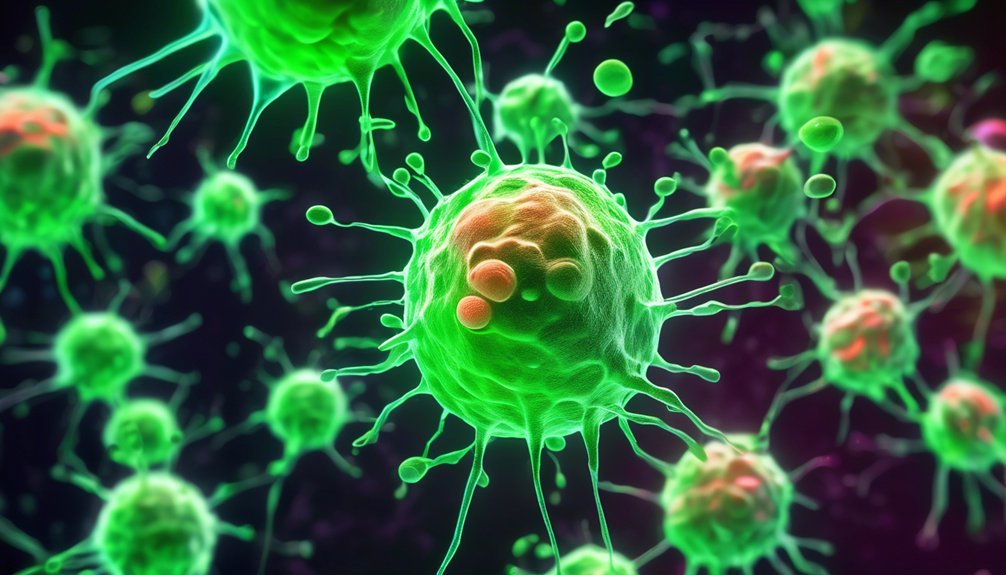
As researchers explore novel therapeutic avenues, ivermectin’s potential in cancer treatment is gaining traction due to its ability to induce immunogenic cell death (ICD) and modulate the tumor microenvironment. Future directions focus on innovative strategies, including novel combinations with existing therapies to enhance therapeutic synergy. Clinical trials will be crucial for dosage optimization and patient selection, ensuring that treatments target specific resistance mechanisms. Additionally, biomarker identification and immune profiling will aid in understanding patient responses, maximizing therapeutic windows. Safety assessments will remain a priority, ensuring the well-being of patients as potential side effects are monitored.
| Focus Area | Importance |
|---|---|
| Novel Combinations | Enhance treatment efficacy |
| Clinical Trials | Validate safety and efficacy |
| Dosage Optimization | Maximize therapeutic effects |
| Biomarker Identification | Tailor treatments effectively |
| Immune Profiling | Understand patient responses |
Frequently Asked Questions
What Types of Cancers Might Benefit From Ivermectin Treatment?
You might explore ivermectin’s potential benefits in treating various cancers, including breast cancer, lung cancer, pancreatic cancer, melanoma, colorectal cancer, and prostate cancer, as emerging research suggests its role in modulating immune responses.
Are There Any Side Effects of Using Ivermectin in Cancer Therapy?
When considering ivermectin’s role in cancer therapy, you should be aware of potential side effects. Proper ivermectin dosage is crucial for effective side effects management, ensuring patient safety while pursuing innovative treatment options.
How Does Ivermectin Compare to Other Cancer Treatments?
Ivermectin’s mechanism differs significantly from traditional therapies, targeting unique pathways. While its cancer treatment efficacy shows promise, comparing it to established options highlights both its potential benefits and limitations in clinical settings.
Can Ivermectin Be Combined With Immunotherapy?
You can explore ivermectin synergy with immunotherapy, as it may enhance immune response and tumor targeting. Combining these treatments could potentially lead to improved outcomes, warranting further investigation into their synergistic effects on cancer management.
Is Ivermectin Safe for Long-Term Use in Cancer Patients?
When considering long-term safety for cancer patients, you should evaluate ivermectin’s potential side effects and interactions with other treatments. Consulting healthcare providers ensures a comprehensive understanding of risks and benefits tailored to individual patient needs.
Conclusion
In summary, ivermectin’s induction of immunogenic cell death intricately intertwines ATP, HMGB1, and calreticulin, crafting a compelling catalyst for cancer therapy. By stimulating the immune system, these signals shape a supportive, synchronized response against tumors. As research progresses, the potential of ivermectin to transform treatment trajectories and enhance therapeutic outcomes becomes increasingly apparent. Future explorations hold promise for this potent paradigm, paving pathways toward more effective cancer interventions and fostering hope for patients facing formidable foes.
